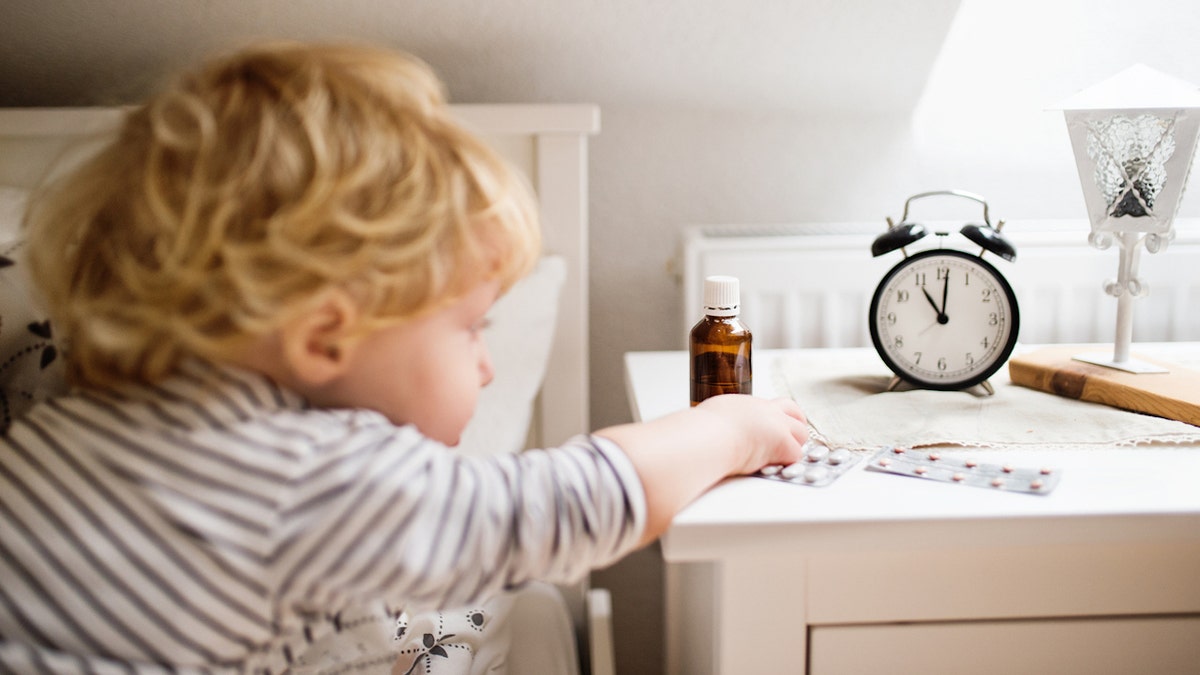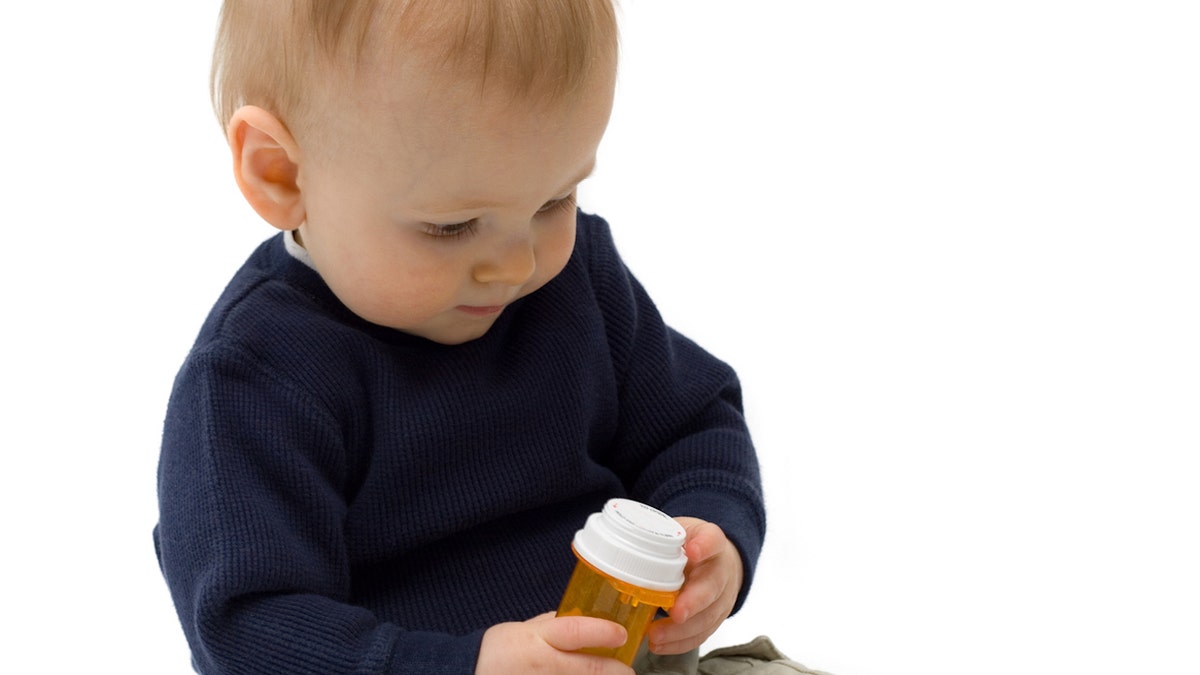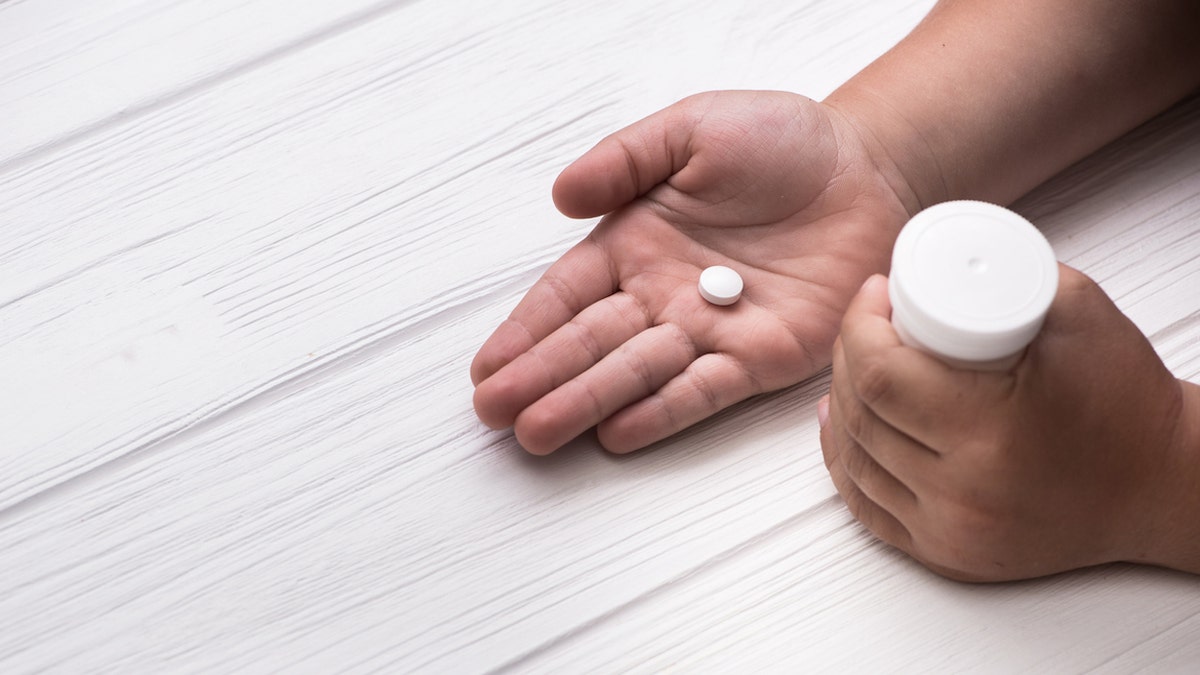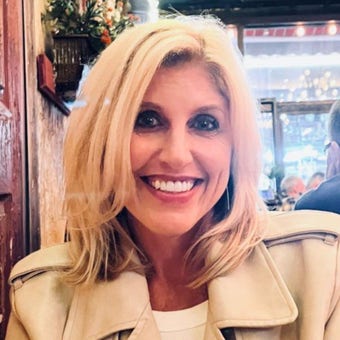Sen. Mike Braun: It's been too easy for drug companies to get a new opioid on the market
Sen. Mike Braun, R-In., and Sen. Joe Manchin, D-W.Va., draft ways to combat the drug crisis on 'Special Report.'
More than half of all poisoning deaths among children five years and younger involve opioid drugs, a new study revealed.
The study, published in the journal Pediatrics on Wednesday, was conducted by researchers at The Poison Control Center at the Children's Hospital of Philadelphia in Pennsylvania.
Researchers analyzed data from 40 states on the fatalities of young children between 2005 and 2018 in which the cause of death was identified as a "poisoning, overdose or acute intoxication."
The data came from the National Fatality Review-Case Reporting System, which collects and analyzes information about kids' fatalities across 40 states.
YOUTH OPIOID OVERDOSES ON THE RISE AS SCHOOLS STRUGGLE TO FIGHT THE EPIDEMIC
Out of 731 poisoning-related deaths, 47% involved opioids — which include oxycodone, hydrocodone, morphine, heroin, codeine, fentanyl and others — making them the most common cause.
Over-the-counter medications for pain, colds and allergies came in at a distant second, at 14.8%.
The study also revealed a sharp increase in the share of opioid deaths between 2005 (24.1%) and 2018 (52.2%).

More than half of all poisoning deaths among children five years and younger involve opioid drugs, a new study revealed. (iStock)
"There are so many toxic substances in our world that could harm children," lead researcher Dr. Christopher Gaw, a pediatric emergency physician at Children’s Hospital of Philadelphia, told Fox News Digital in an email.
"It is truly striking how just one class of substances was implicated so frequently in child poisoning deaths."
Accidental overdoses made up the majority of opioid poisonings, at 40.7%.
Another 17.9% were deliberate poisonings; 41.4% were attributed to other causes (adverse effects or medical treatment mishaps), the study findings stated.
Children are collateral damage in opioid epidemic
In 2020, nearly 75% of all drug overdose deaths involved the use of opioids, according to the Centers for Disease Control and Prevention (CDC).
The findings of this most recent study are evidence that the opioid epidemic has not spared infants or young children, Dr. Gaw said.

Opioids like Percocet are sometimes overprescribed and left where kids can get them, said Dr. Marc Siegel of New York City — but this risk has decreased amid stricter prescription regulations. (iStock)
"Children, especially infants and young children, are often exposed to what is in and around their environment," he continued.
"It is likely that children are being exposed more frequently to non-prescription and synthetic opioids such as fentanyl, based on the current state of the U.S. opioid epidemic."
FENTANYL-RELATED DEATHS HOLD STEADY IN MAJOR CITIES
Dr. Marc Siegel, professor of medicine at NYU Langone Medical Center in New York City and a Fox News medical contributor, told Fox News Digital he recognizes that opioids like Percocet are sometimes overprescribed and left where kids can get them.
However, he said this risk has decreased amid stricter Drug Enforcement Administration (DEA) and state oversight of prescriptions. Dr. Siegel was not involved in the study.
Accidental overdoses made up the majority of opioid poisonings, at 40.7%.
"At the same time, there are more fake pills laced with fentanyl, oxycodone or Adderall, coming out of Mexico, fed by ingredients from China and elsewhere," Dr. Siegel warned.
"These are bought on the internet or social media, and then left where little children can get a hold of them," on told Fox News Digital in an email.
Fentanyl, in particular, is 50 to 100 times more powerful than morphine, he said — and can even outlast Narcan.
Preventing pediatric poisonings
The study findings highlight the importance of putting prevention measures in place.
One of these is making naloxone available in communities to act as an antidote to opioid poisonings. (Naloxone is more widely known by its brand name, Narcan.)
FDA CRACKS DOWN ON ANIMAL TRANQUILIZER AS OVERDOSE DEATHS AND AMPUTATIONS SOAR
"We often think of using naloxone in adults, but this is also an effective, safe and lifesaving medication for children poisoned by opioids," said Dr. Gaw.
He also stressed the importance of educating caregivers and the public on the signs of opioid poisoning. Some common symptoms include small pupils; shallow, slow or stopped breathing; and difficulty arousing.

It’s always best to store medications and other potentially dangerous substances "up, away and out of sight" — preferably in a locked cabinet or closet, one doctor said. (iStock)
"Poisonings can happen in a split second," Dr. Gaw said.
"A child may find a dropped medication on the floor that a caregiver doesn't see, or may get into a bag or a purse when a caregiver is looking the other way. It is not reasonable for us to expect a caregiver to watch a child 24/7 and be within arm's reach to keep them out of harm's way. Instead of just supervision, families should focus on preparedness and prevention."
CLICK HERE TO SIGN UP FOR OUR HEALTH NEWSLETTER
It’s always best to store medications and other potentially dangerous substances "up, away and out of sight" — preferably in a locked cabinet or closet, he said.
Outside the home, Dr. Gaw calls for interventions at the community level.
"Instead of just supervision, families should focus on preparedness and prevention."
"There is important work being done to reduce unnecessary opioid prescribing, drug diversion, and treatment of substance use disorders," he said.
CLICK HERE TO GET THE FOX NEWS APP
"These efforts — though not directly related to children — also help protect them, since they can reduce the chance of exposure to opioids in the home."
Parents or caregivers who suspect or know of a case of poisoning should call the Poison Control Center hotline at 1-800-222-1222 to reach a trained medical professional.


